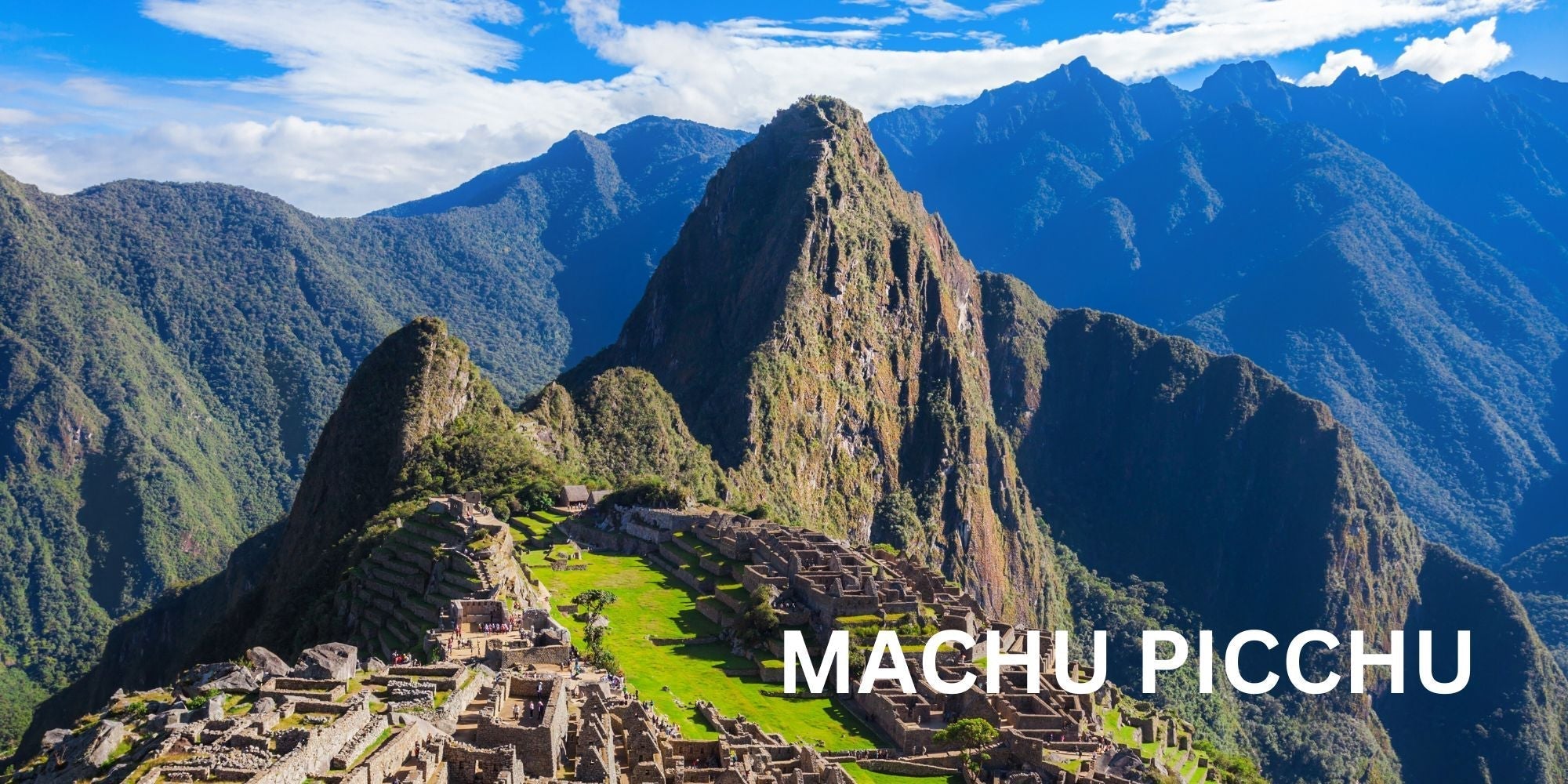
Machu Picchu, the legendary ruins in the Andes Mountains of Peru, sits at a concerning altitude for visitors. As a company with years of high altitude experience, we’ll review everything you should know about Machu Picchu altitude, including six tips to combat altitude sickness.
Machu Picchu altitude sits at 7,972 feet above sea level at its peak. This is around a 3180 foot difference than the city of Cusco, another high altitude destination.
Machu Picchu Altitude:
For travelers coming in from out of the country and not used to these elevations in Machu Picchu, it can be a struggle or even a major setback.
Right next to Machu Picchu is Huayna Picchu, which stands higher at 8,835 feet. This iconic mountain gives the tall look in the background of Machu Picchu.
Huayna Picchu Elevation:
If you’re daunting on a hike up Huayna Picchu, you’ll want to be even more prepared.
Yes, Machu Picchu is considered high altitude.
At 7,972 feet, Mountain Medicine categorizes this as high altitude.³ It’s estimated to be about 23% less oxygen at this height than found at sea level.⁴
No, Machu Picchu is not higher in altitude than Cusco.
With 3180 feet in difference, Cusco is higher than Machu Picchu, sitting at 11,152 feet.
Altitude of Cusco vs Machu Picchu:
While a big jump in altitude from Machu Picchu to Cusco, they both are considered high altitude and proper precautions should be taken.
Yes, Machu Picchu is higher than Denver, by 2692 feet.
Altitude of Denver vs Machu Picchu:
Denver altitude - 5,280 ft (1609 m)Machu Picchu altitude - 7,972 ft (2,430 m)
Even at Denver’s heights, visitors are affected by the altitude, which further confirms the worse effects you could have visiting Machu Picchu.
No, Machu Picchu is not higher than Kilimanjaro.
Kilimanjaro is much higher than Machu Picchu, sitting at 19,341 feet above sea level.
Altitude of Kilimanjaro vs Machu Picchu:
Kilimanjaro will take significantly more preparation with its elevation as it’s considered very high altitude in comparison to Machu Picchu.
Yes, you will likely get altitude sickness at Machu Picchu.
At 10,000 feet they estimate 50% of people experience altitude sickness, and Machu Picchu’s elevation is not that far off.⁵
You should be well prepared for altitude sickness when visiting Machu Picchu, make sure to read our best combatting tips below.
Machu Picchu altitude sickness, also known as acute mountain sickness (AMS), can affect visitors due to the low oxygen levels.
With physiological problems, including oxidative stress, issues including headaches and nausea can kick in.
Symptoms of Machu Picchu altitude sickness may include:
These symptoms can usually show up within 6-24 hours of altitude exposure. Follow our tips below to help combat the physiological stress.
Yes, we’d recommend altitude tablets for visiting or climbing Machu Picchu.
In the US there’s medicine including Diamox that’s known for helping altitude. While locally in Peru, Sorojchi is a popular option, which is essentially a mixture of Aspirin, salophen, and caffeine. Another local remedy is coca leaves.
For natural altitude supplement support, our Zaca chewables are made to help with antioxidants and amino acids to aid with oxidative stress, hydration, and recovery.
At high altitude, Machu Picchu can pose challenges for many travelers.
As a high elevation company, we have expert tips so you can take the proper preparations.
Here's 6 Tips To Combat Machu Picchu Altitude Sickness:
By following these expert tips, you can better prepare your body for the altitude at Machu Picchu!

Elevate your travel and mountain adventures with Zaca, the ultimate chewable supplement for every journey. Whether you're soaring through the skies or conquering rugged terrains, these chewables ensure you rehydrate, replenish, and recover fast. Formulated with natural antioxidants, vitamins, and amino acids that can help with oxidative stress and travel-related discomforts. Designed in packets for convenience, pop them in your bag, pocket, or travel kit, and enjoy the benefits wherever you are. Take 2-4 delicious berry chewables per day, or as you need. Try Zaca’s chewable supplement today and don't let travel fatigue hold you back.
SOURCES:
1. How High is Machu Picchu? Altitude At Machu Picchu
https://landedtravel.com/machu-picchu-altitude/
2. Machu Picchu Elevation
https://en.wikipedia.org/wiki/Machu_Picchu
3. Effects of high altitude on humans
https://en.wikipedia.org/wiki/Effects_of_high_altitude_on_humans
4. Altitude To Oxygen Chart
https://hypoxico.com/pages/altitude-to-oxygen-chart
5. Patient education: High-altitude illness (including mountain sickness)
https://www.uptodate.com/contents/high-altitude-illness-including-mountain-sickness-beyond-the-basics/print#
6. How Many Days in Machu Picchu? Plan a Trip to Machu Picchu You Won’t Forget
https://www.apus-peru.com/blog/how-many-days-in-machu-picchu
7. How long does it take to walk from Aguas Calientes to Machu Picchu?
https://www.quora.com/How-long-does-it-take-to-walk-from-Aguas-Calientes-to-Machu-Picchu
8. The Importance Of Drinking Water At High Altitude
https://summitoxygen.net/drinking-at-high-altitude/
9. Sleep: The Secret Ingredient of Injury Recover
https://www.orthocarolina.com/media/sleep-the-secret-ingredient-of-injury-recovery
10. High altitude and oxidative stress
https://pubmed.ncbi.nlm.nih.gov/17482529/
11. Effect of high altitude (7,620 m) exposure on glutathione
https://pubmed.ncbi.nlm.nih.gov/11320641/
12.. Oxidative Stress and Diseases Associated with High-Altitude Exposure
https://www.ncbi.nlm.nih.gov/pmc/articles/PMC8868315/
13. Huayna Picchu Elevation
https://en.wikipedia.org/wiki/Huayna_Picchu
Copy the coupon code & use it at checkout